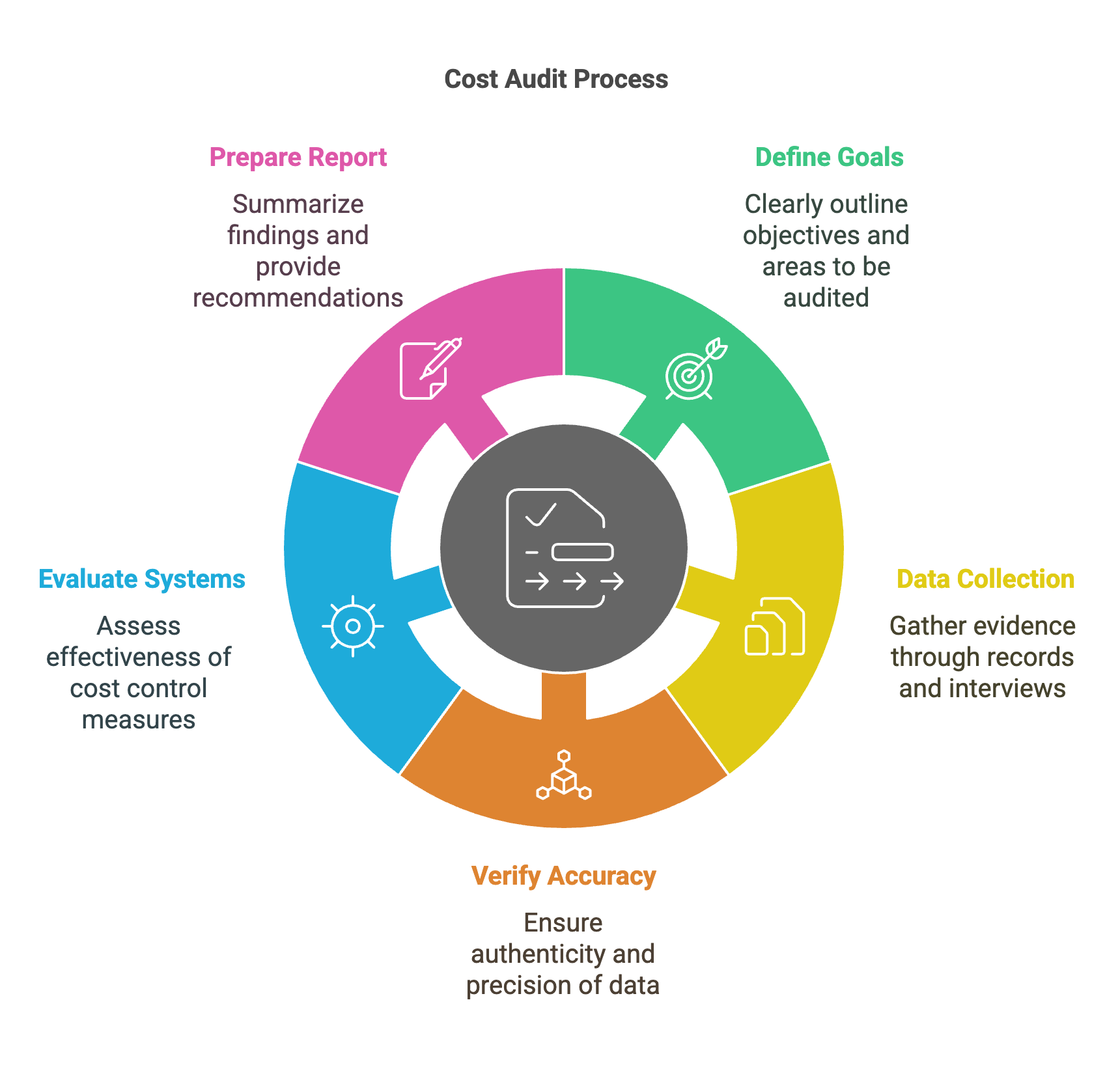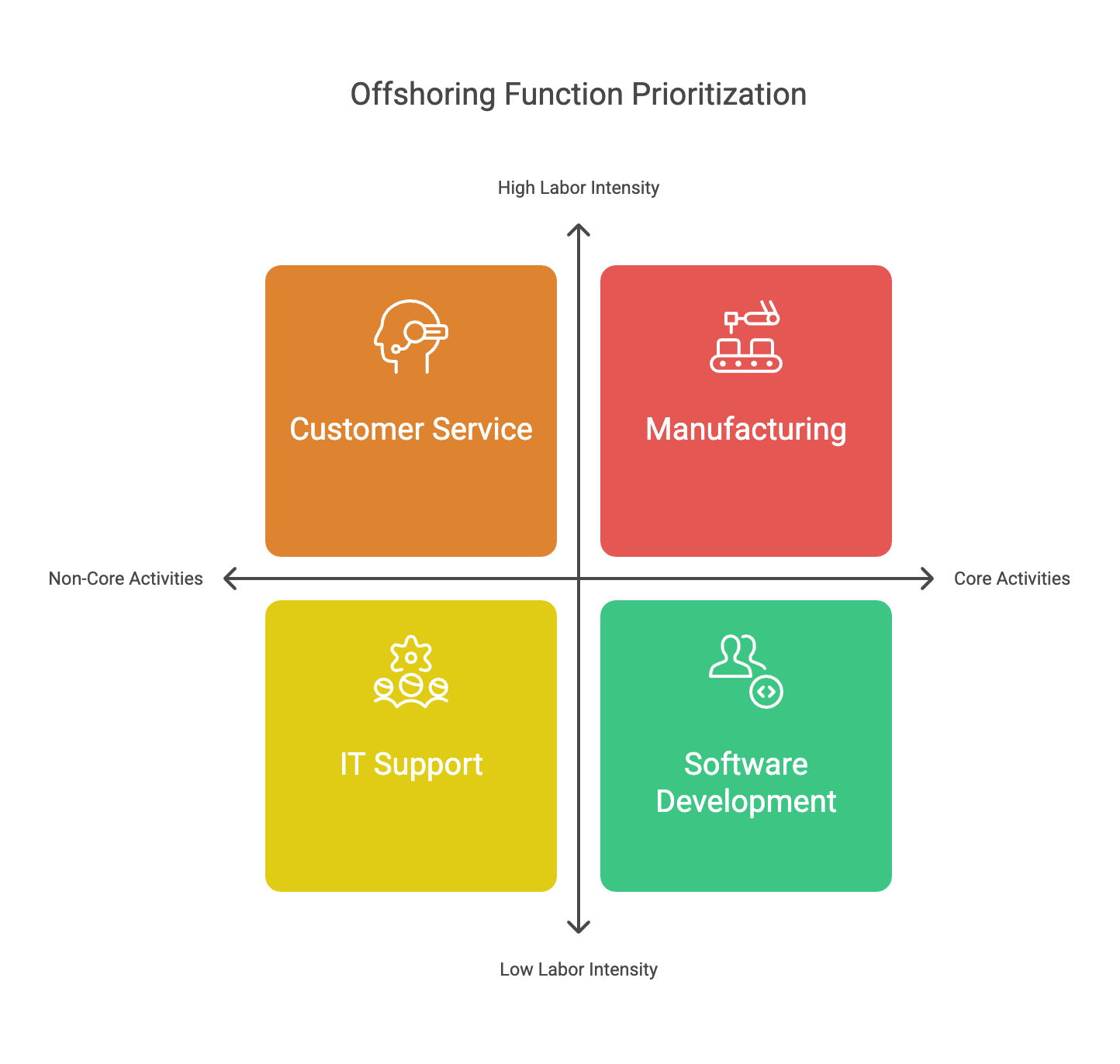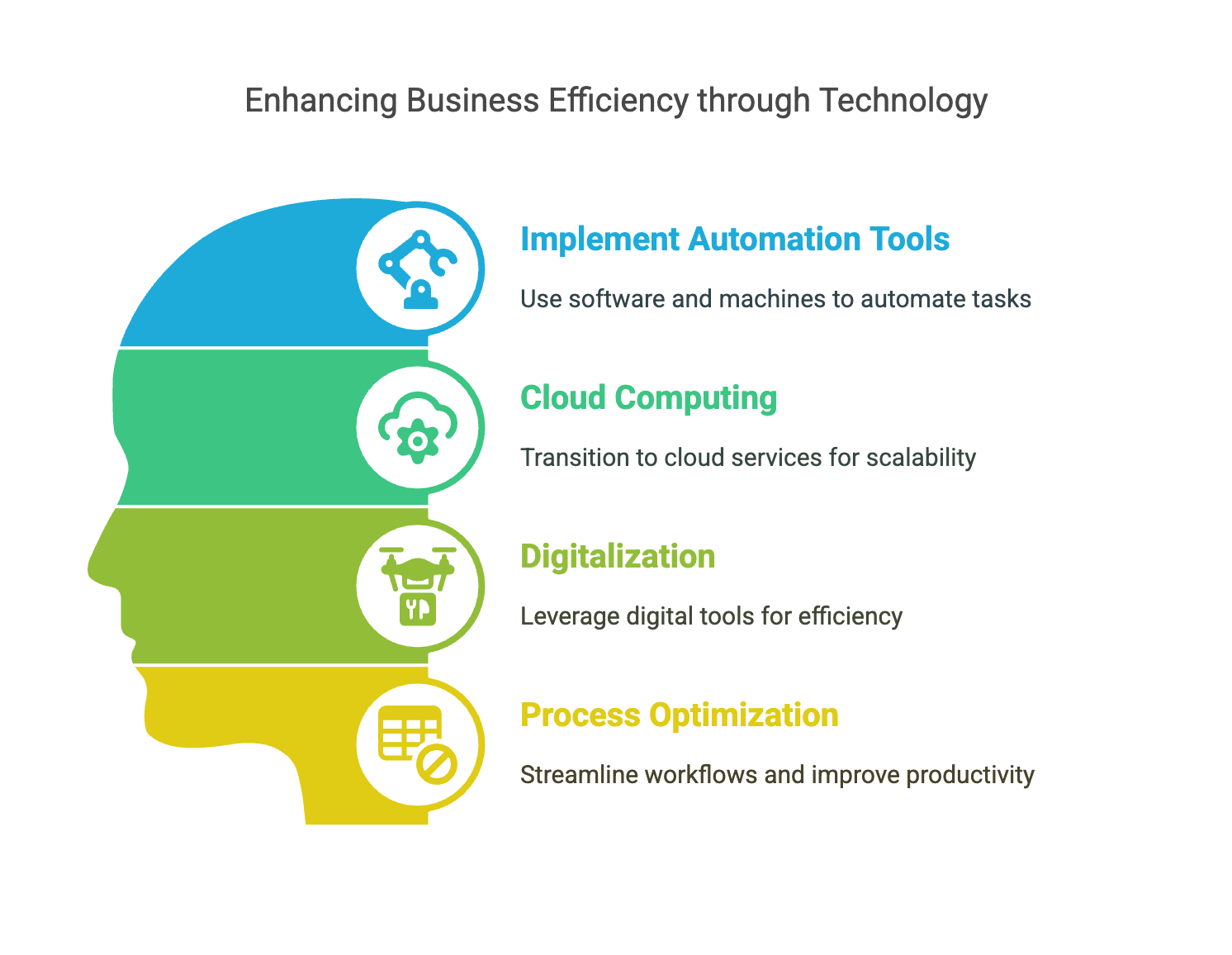Offshore outsourcing involves relocating business operations to lower-cost locations, primarily to reduce operating costs. This strategy can significantly lower labor expenses, often by up to 70%, and reduce overhead costs by eliminating the need for infrastructure investments. While offshore outsourcing offers substantial cost savings, it also presents challenges such as hidden costs, including cultural and transition expenses, which can add complexity and reduce productivity. Despite these challenges, offshore outsourcing can enhance business efficiency by allowing companies to focus on core activities and improve profitability by leveraging global talent and resources. However, managing offshore operations requires careful planning and oversight to mitigate logistical and communication challenges, ensuring that the benefits of cost reduction and efficiency improvements are fully realized.
Actively managing and reducing offshore outsourcing costs is crucial because it helps businesses maximize their cost savings and maintain profitability by minimizing unexpected expenses and inefficiencies. Effective cost management also allows companies to optimize their outsourcing strategies, ensuring that the benefits of reduced costs are aligned with improved operational efficiency and strategic business goals.
To reduce business expenses, businesses can employ strategies such as process automation, outsourcing (including offshoring), vendor management, and workforce optimization. Additionally, techniques like zero-based budgeting, streamlining workflows, and renegotiating contracts can also help minimize expenses while maintaining efficiency and profitability.
With Go Carpathian, business owners can hire top-quality professionals from Eastern Europe, South Africa, and Latin America while reducing hiring costs. Schedule a talk with a recruiting specialist and find out how.
In this post, we will take a detailed look at offshoring and cost tracking, including how to assess your current operating cost.
How to Assess Your Current Operating Costs
To assess your current operating costs, start by conducting a thorough analysis of your financial statements and operational processes. Identify areas where costs can be optimized, such as labor, materials, and overhead expenses. This assessment will help you pinpoint inefficiencies and opportunities for cost reduction, whether through process improvements or strategic outsourcing.
How to Conduct a Comprehensive Cost Audit
Payroll is often the highest operating cost for many businesses. To manage payroll costs effectively, you need to ensure that staffing levels align with business needs. Furthermore, you can use automated payroll software to reduce administrative costs, such as PayFit, Square Payroll, and Quickbooks Payroll. Finally, assess salaries and benefits regularly to ensure they are competitive and aligned with performance metrics.
A comprehensive cost audit involves several key steps to ensure a thorough examination of a company’s cost management activities:
Define Audit Goals and Scope
Clearly outline the objectives and areas to be audited, such as payroll, inventory, or marketing expenses. This helps focus efforts on critical areas requiring attention.
Collect and Analyze Data
Gather evidence through financial records, interviews, and observations. Use accounting software to automate data collection and analysis.
Verify Cost Accuracy
Ensure the authenticity and accuracy of cost accounting data to prevent false or omitted costs. This includes reviewing invoices, reconciling accounts, and assessing cost drivers.
Evaluate Cost Management Systems
Assess the effectiveness of cost control measures and identify any problems or deficiencies.
Prepare Audit Report
Summarize findings and provide recommendations for improvement, such as optimizing cost accounting methods or streamlining processes.
Guide on Conducting an Audit of Current Expenses Using Accounting Software
Set Up Accounting Software
Implement software like QuickBooks or Xero to track and categorize expenses automatically.
Configure Expense Categories
Create categories for different types of expenses, such as payroll, utilities, and supplies.
Automate Expense Tracking
Use tools to capture and categorize expenses from receipts and invoices.
Review and Flag Expenses
Use software to automatically flag unusual or out-of-policy expenses for further review.
Generate Reports and Analytics
Produce detailed reports to identify trends and areas for cost reduction.
Setting up systems to categorize and record operating expenses continuously involves implementing a structured approach to track and manage expenses effectively. This begins with categorizing costs into types such as fixed, variable, and semi-variable expenses, which helps in understanding their controllability and impact on business operations. Additionally, costs can be grouped into direct and indirect categories, with direct costs tied to specific products or services and indirect costs supporting overall operations. Utilizing accounting software allows for the automation of expense tracking, enabling real-time visibility into operating expenses. This system should also include regular reviews and updates to ensure that cost records accurately reflect current business activities, facilitating informed decision-making and cost optimization strategies.
Identifying Key Cost Drivers
Identifying key cost drivers involves pinpointing areas where businesses commonly overspend. Common areas include labor, telecom services, data storage, software, marketing, and office expenses. In industries like manufacturing and transportation, capital expenditures on equipment and infrastructure are significant. To use audit data for cost reduction, create a list of expenses and categorize them using a drop-down menu with options like “worth it,” “not worth it,” and “need it.” This helps prioritize essential costs and eliminate unnecessary ones. For instance, if a software subscription is marked as “not worth it,” consider canceling it to reduce expenses. By systematically evaluating each expense, businesses can identify areas for cost reduction and make informed decisions to optimize their spending.
Cost Control Through Offshoring
Offshoring is a strategic approach to cost control that involves relocating certain business operations to countries with lower labor costs, thereby reducing expenses while maintaining operational efficiency. Given that payroll is often the highest expense for businesses, offshoring can significantly alleviate this burden by outsourcing labor-intensive tasks such as manufacturing or customer service to regions with lower wage structures.
Criteria for Selecting Business Functions for Offshoring
When deciding which functions to offshore, consider the following criteria:
Labor Intensity: Functions like manufacturing, customer service, and data entry are ideal for offshoring due to their high labor requirements and potential for cost savings.
Non-Core Activities: Offshore tasks that are not central to your business’s core competencies, such as IT support or back-office operations, to free up resources for strategic activities.
Scalability and Flexibility: Choose functions that can be easily scaled up or down based on business needs, such as software development or call center services.
Access to Specialized Skills: Offshore functions that require specialized skills not readily available locally, such as software development or engineering.
Strategic Importance of Maintaining Core Competencies In-House
While offshoring can offer significant cost benefits, it is crucial to maintain core competencies in-house. This ensures that critical functions, such as product development, strategic planning, and customer relationships, remain under direct control and are not compromised by external factors like communication barriers or quality control issues. By keeping core competencies in-house, businesses can focus on innovation, quality, and strategic decision-making while offshoring less critical functions to optimize costs and efficiency. This strategic mix allows companies to strike a balance between cost savings and maintaining control over essential business operations.
Choosing the Right Offshore Partner
Selecting the right offshore partner is crucial for ensuring successful collaboration and achieving business objectives. Here’s a step-by-step guide on researching and selecting offshore service providers, along with tips on negotiating terms for quality and cost-effectiveness:
Step-by-Step Guide to Researching and Selecting Offshore Service Providers
Define Project Needs and Objectives: Clearly outline the scope, requirements, budget, goals, and timelines of your project. This roadmap helps in selecting a partner who can meet your specific needs.
Research and Shortlist Potential Partners: Conduct thorough online research focusing on companies with a track record of success in relevant domains. Evaluate client testimonials and reviews to assess their performance and reliability.
Assess Technical Expertise and Domain Knowledge: Evaluate the technical expertise and domain knowledge of potential partners. Ensure their technology stack aligns with your project’s specific technologies and industry needs.
Evaluate Communication and Collaboration Skills: Assess their communication skills and project management systems to ensure seamless interactions despite potential time zone or language barriers.
Consider Company Culture and Values: Align with a partner who shares your business ethos and can integrate smoothly with your team’s culture.
Analyze Cost and Pricing Structure: Compare different pricing models to ensure alignment with your budget and financial goals. Focus on cost-effectiveness rather than just cost reduction.
When negotiating terms for quality and cost-effectiveness with an offshore partner, several key strategies can be employed. First, clearly define service requirements and expectations to ensure alignment with your business goals, as this helps prevent misunderstandings and ensures tailored solutions. Establishing strong communication channels is also crucial for resolving issues promptly and maintaining transparency throughout the partnership. Additionally, negotiate flexible pricing models that offer scalability and adaptability to changing business needs, ensuring cost-effectiveness without compromising quality. It’s important to set measurable performance metrics and Service Level Agreements (SLAs) that are specific, measurable, achievable, relevant, and time-bound (SMART) to ensure accountability and quality standards. Finally, consider cultural differences and legal compliance to avoid potential pitfalls and ensure a smooth negotiation process.
Managing Offshore Operations
Effective management of offshore operations involves setting up robust communication and project management systems, maintaining quality control, and aligning offshore output with company standards. Here’s how to achieve these objectives:
Setting Up Communication and Project Management Systems
Setting up communication and project management systems for offshore operations involves establishing clear communication channels and utilizing tools like video conferencing and project management software.
Establish Clear Communication Channels: Use tools like Slack or Teams for quick updates and video calls for detailed discussions. Set clear expectations for response times across different time zones to avoid delays.
Implement Project Management Tools: Utilize platforms such as Asana, Trello, or ClickUp to track tasks, deadlines, and responsibilities. This ensures transparency and accountability across the team.
Regular Meetings: Schedule daily stand-ups for quick updates, weekly team reviews for deeper discussions, and monthly strategic sessions to align with company goals.
To maintain quality control and align offshore output with company standards, it’s essential to establish clear Standard Operating Procedures (SOPs) that outline specific quality expectations and processes. Implementing measurable performance metrics allows for regular assessments of deliverables against these standards. Additionally, fostering a culture of open feedback helps identify and address any deviations promptly. Regular quality audits should be conducted to ensure compliance with company standards, and training programs can be implemented to enhance skills and knowledge. By integrating these strategies, businesses can ensure that offshore teams consistently meet quality benchmarks and contribute positively to overall business objectives.
Other Ways to Reduce Operating Costs
In addition to offshoring, several strategies can help reduce operating expenses, including:
Automation and Technology Integration
Automation and technology integration streamline business operations by reducing manual errors, enhancing productivity, and improving efficiency, allowing companies to save costs, increase scalability, and provide better customer experiences through unified systems and automated workflows.
Implement Automation Tools: Use software and machines to automate repetitive tasks, reducing labor costs and increasing efficiency. For example, AI can streamline data processing and customer service operations.
Cloud Computing: Transition to cloud-based services to reduce infrastructure costs associated with hardware and maintenance. Cloud solutions offer scalability and flexibility, allowing businesses to pay only for the resources they use.
Digitalization: Leverage digital tools to enhance efficiency, such as using drones for inspections in industries like oil and gas or employing AI for predictive maintenance to reduce downtime.
Process Optimization: Use technology to streamline workflows, eliminating unnecessary steps and enhancing productivity. This includes adopting agile methodologies and DevOps practices to improve development cycles.
Several software tools can aid in process automation, enhancing efficiency and reducing manual labor. For instance, ActiveBatch and RunMyJobs by Redwood are workload automation platforms that streamline IT and business processes, while Appian offers low-code automation for complex workflows. Nintex is renowned for its workflow automation and RPA integration, which is particularly useful for automating tasks in finance and HR. Blue Prism specializes in robotic process automation, which is ideal for large-scale enterprises needing to automate repetitive tasks. Additionally, tools like Zapier and Kissflow provide versatile workflow automation capabilities, allowing users to create customized workflows that integrate with various applications. These tools help businesses automate tasks such as data entry, invoice processing, and approval requests, thereby reducing costs.
How to Effectively Track Costs
Effectively tracking costs involves setting up a comprehensive cost-tracking system and integrating it into daily business operations. Here’s how to implement such a system using modern accounting software:
Setting Up a Cost Tracking System
Setting up a cost-tracking system involves selecting robust accounting software, configuring detailed expense categories, implementing real-time expense tracking, and scheduling regular financial reviews to ensure accurate and timely monitoring of operational costs.
Choose Accounting Software: Select a robust accounting platform like QuickBooks, Xero, or FreshBooks that offers built-in cost-tracking features. These tools can categorize expenses, generate reports, and provide real-time financial insights.
Configure Cost Categories: Set up detailed categories for different types of expenses, such as labor, materials, and overheads. This helps in analyzing spending patterns and identifying areas for cost reduction.
Implement Real-Time Tracking: Use tools that allow for real-time expense tracking, enabling immediate visibility into financial performance. This includes integrating with expense management apps like Expensify or Concur to streamline employee expense reporting.
Regular Reviews and Analysis: Schedule regular reviews of financial reports to identify variances between actual and budgeted costs. This proactive approach helps in making timely adjustments to stay on track.
Integrating cost tracking into daily operations is crucial for maintaining real-time financial oversight. This integration allows businesses to make informed decisions about resource allocation, pricing strategies, and budget adjustments, enhancing financial stability and improving efficiency.
Key Costs to Track
Key operational costs that every business should track include utilities, payroll, procurement, and third-party services. Monitoring these expenses is crucial as they often represent significant portions of a company’s budget. Utilities and procurement costs can fluctuate based on external factors like market prices and supply chain disruptions, while payroll is typically the largest expense for most businesses. Tracking these costs helps identify trends and patterns, enabling businesses to forecast future expenses more accurately. By analyzing these trends, companies can make informed financial decisions, such as renegotiating contracts with suppliers, optimizing energy consumption, or adjusting staffing levels to align with business needs. This proactive approach to cost management allows businesses to maintain financial stability, optimize resources, and improve profitability over time.
Regular Review and Cost Optimization
Regular review and cost optimization involve a systematic process of periodically comparing actual operating costs against budgets and forecasts. This plan should include monthly financial reviews to identify variances and trends, followed by quarterly assessments to evaluate long-term performance and adjust spending accordingly. Ongoing adjustments are crucial as they allow businesses to respond to changes in market conditions, operational needs, or unexpected expenses. By continually optimizing cost efficiency, companies can ensure that resources are allocated effectively, reduce unnecessary expenses, and maintain a competitive edge. This iterative process of review and adjustment helps businesses stay agile and adaptable, enabling them to make informed decisions that align with their strategic goals and financial objectives.
What to Learn How to Reduce Operating Costs with Offshoring?
The strategies for reducing operational costs include leveraging offshoring to capitalize on lower labor costs and specialized skills, which can significantly reduce expenses while maintaining efficiency. Additionally, implementing effective cost-tracking systems allows businesses to monitor expenses in real time, identify trends, and make informed financial decisions. By integrating these approaches with other cost-saving measures, such as process automation, supply chain optimization, and regular financial reviews, businesses can optimize their cost structure. Offshoring helps in outsourcing non-core functions, freeing up resources for strategic activities, while robust cost tracking ensures that financial performance is continuously aligned with business goals. This comprehensive approach enables companies to enhance profitability, improve efficiency, and maintain a competitive edge in the market.
Businesses should adopt a proactive approach to expense management by implementing strategies like offshoring, automation, and cost tracking to enhance profitability and ensure long-term sustainability. By taking control of their financial operations, companies can optimize resources, reduce unnecessary expenses, and position themselves for success in a rapidly changing business environment.
Interested in reducing operational costs with outsourcing? Schedule a Discovery Call to learn how Go Carpathian can help you.








